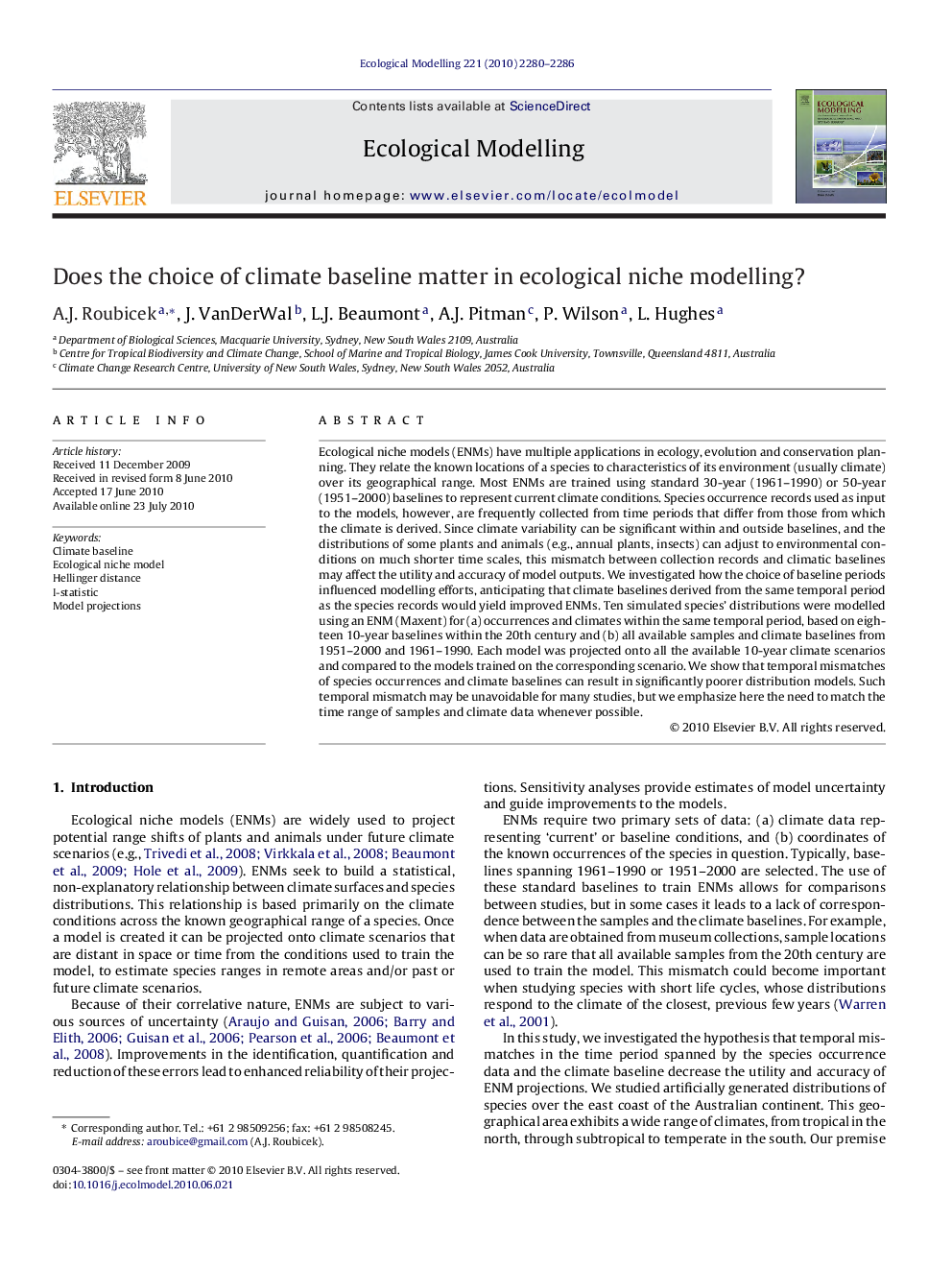| Article ID | Journal | Published Year | Pages | File Type |
|---|---|---|---|---|
| 4377218 | Ecological Modelling | 2010 | 7 Pages |
Ecological niche models (ENMs) have multiple applications in ecology, evolution and conservation planning. They relate the known locations of a species to characteristics of its environment (usually climate) over its geographical range. Most ENMs are trained using standard 30-year (1961–1990) or 50-year (1951–2000) baselines to represent current climate conditions. Species occurrence records used as input to the models, however, are frequently collected from time periods that differ from those from which the climate is derived. Since climate variability can be significant within and outside baselines, and the distributions of some plants and animals (e.g., annual plants, insects) can adjust to environmental conditions on much shorter time scales, this mismatch between collection records and climatic baselines may affect the utility and accuracy of model outputs. We investigated how the choice of baseline periods influenced modelling efforts, anticipating that climate baselines derived from the same temporal period as the species records would yield improved ENMs. Ten simulated species’ distributions were modelled using an ENM (Maxent) for (a) occurrences and climates within the same temporal period, based on eighteen 10-year baselines within the 20th century and (b) all available samples and climate baselines from 1951–2000 and 1961–1990. Each model was projected onto all the available 10-year climate scenarios and compared to the models trained on the corresponding scenario. We show that temporal mismatches of species occurrences and climate baselines can result in significantly poorer distribution models. Such temporal mismatch may be unavoidable for many studies, but we emphasize here the need to match the time range of samples and climate data whenever possible.
